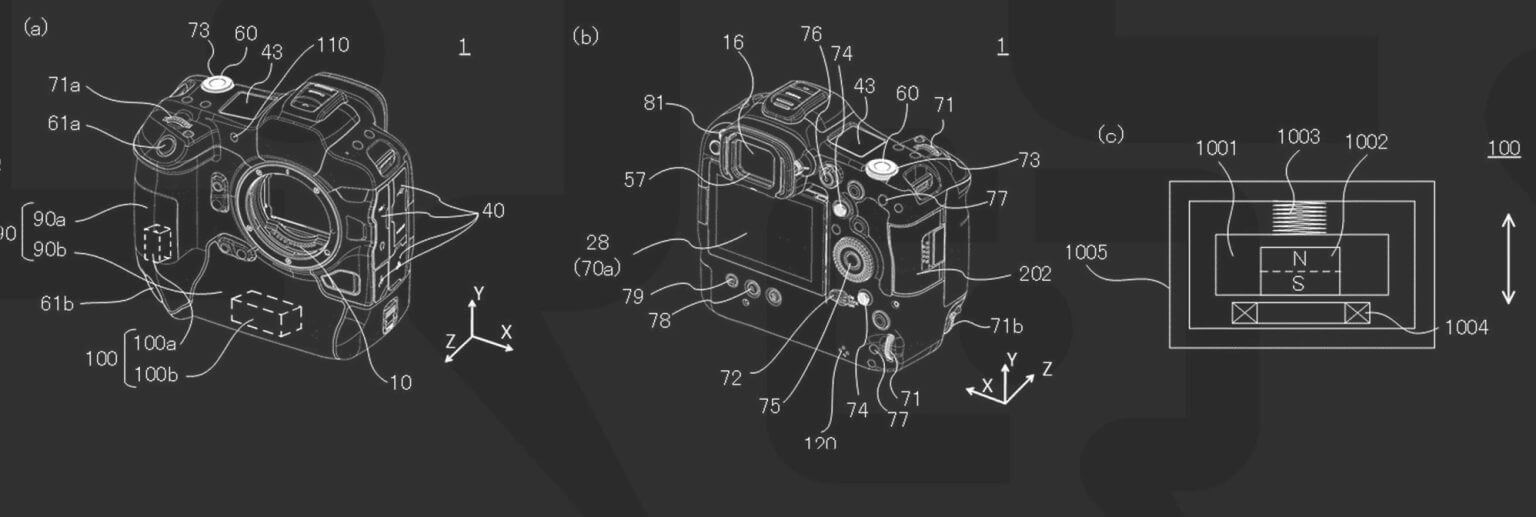One of the issues with a totally silent camera is the fact that we have very little in the way of feedback when an operation occurs. If you don't want that incessant beep and are using an electronic shutter, it's easy to miss that an image has been taken, or that another operation has occurred.
This may be even more problematic if the R1 according to some rumors has a completely electronic shutter or global shutter with no mechanical shutter assembly.
Canon has explored haptic vibration feedback for its cameras in prior patent applications, but this patent application (2023-147064) seems to be specifically on a 1 series sized camera body. One issue especially with the 1 series sized camera bodies is that you can't really know what grip is being used, and firing off piezoelectric motors to vibrate the 2 different grips is inefficient. Of course, with 1 series DSLR cameras, you always had that thunk of a shutter assembly, but that will not be the case going forward in the realm of the RF mirrorless mount.
This patent application deals with detecting the hand position, and then knowing that, vibrates the motor underneath the operator's hand. In the image, 100a and 100b are the vibration devices underneath both grip positions on the integrated grip camera. It seems from this patent application that Canon is using hand pressure and grip deforming as a basis for grip detection. I guess this makes sense as you can't guarantee that a user would be gripping the camera with bare hands or conductive gloves. Canon is doing something clever here though and using the same vibration motors as the grip deforming detection. Since a motor can also be a generator, it's possible to use it for both.
All in all an interesting patent application that may indicate Canon's thoughts on a future R1 camera. But as with all patent applications, this simply is a look into what Canon is researching, it may or may not end up in an actual patent, or product.
Source: Japan Patent Application 2023-147064


There's been other patents that deal with that, but i could see that being a problem for sure.
Both of these are actually mentioned in the patent.
Sounds good though. Anytime I hand my R6 over to anyone they end up taking two hundred photos
orientation sensors can't do it either because i can rotate the camera from landscape position to portrait without moving my hand position.
i could see a final solution involving several different detection methods being used.
hehe sorry I know I'm missing something, but seems counter intuitive to introduce vibration to something you strive to keep as still as possible to get the best images. I'm firmly in camp of as silent and still as possible, when possible.
will we have "haptic shock" instead of shutter shock - if so then obviously sounds bad. but it could be good if it could be turned on for everything other than a shutter full depress. it would indicate to the user that some setting was changed perhaps accidentially.
could also have an intensity setting as well.
Where is Nikon’s answer to the affordable 15-30 and 100-400? To the 600/11 and 800/11? Or to the 1200/8? The 5.2 VR? Their smaller/lighter 70-200/2.8? Their 28-70/2 Let me guess, you don’t care about those lenses, so ‘we’ don’t need them.
It’s great that we have people like you who can speak for all of us and know what we need and what we don’t.
For the burst modes they could do the feedback once at the end of the burst.
I could see vibrations not affecting image stability if done between shots in single-shot mode handheld. But when I was testing tripods, I was surprised to see some vibration dampening take 3-4 seconds. Very curious to see how they'd execute this.